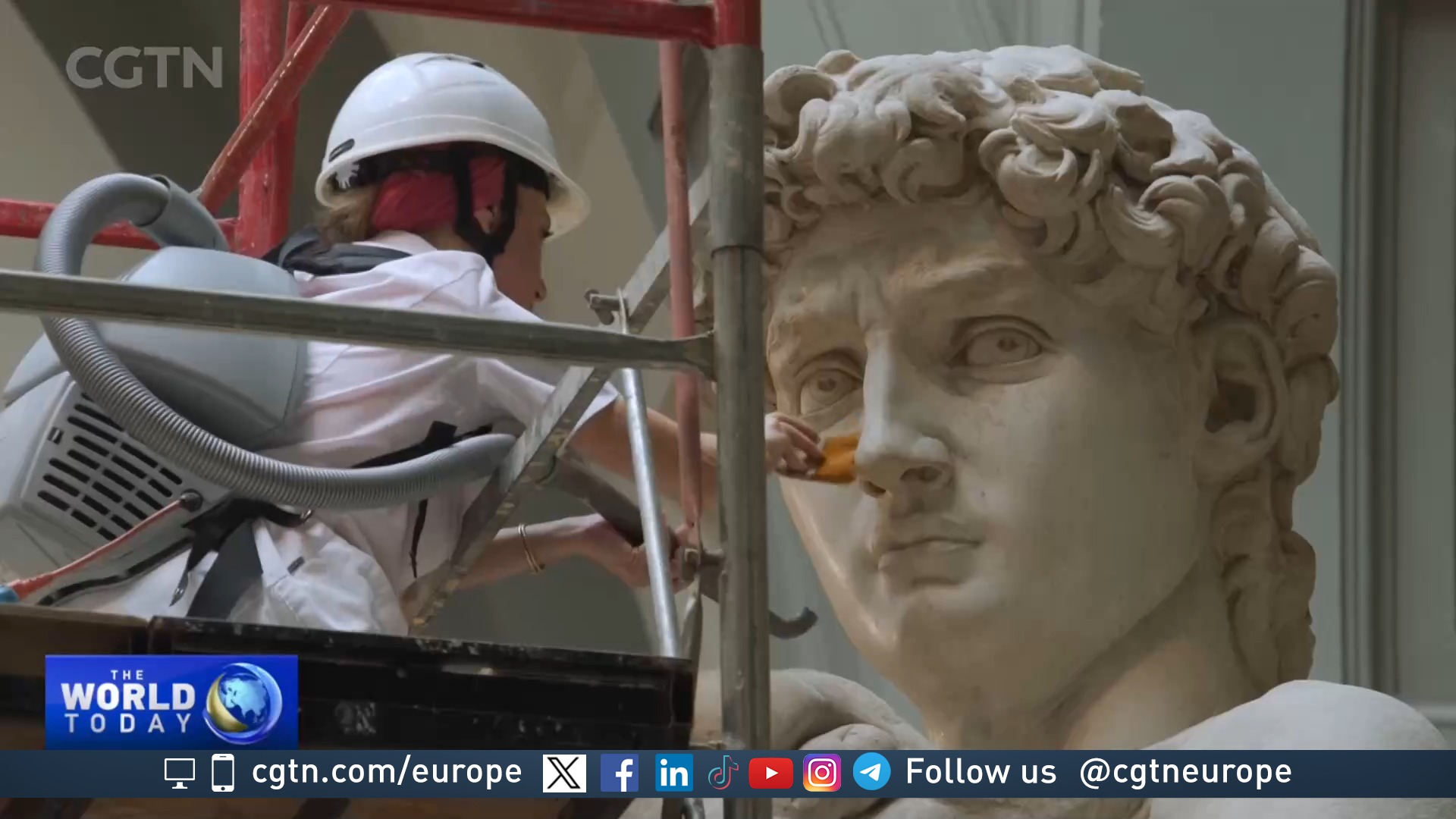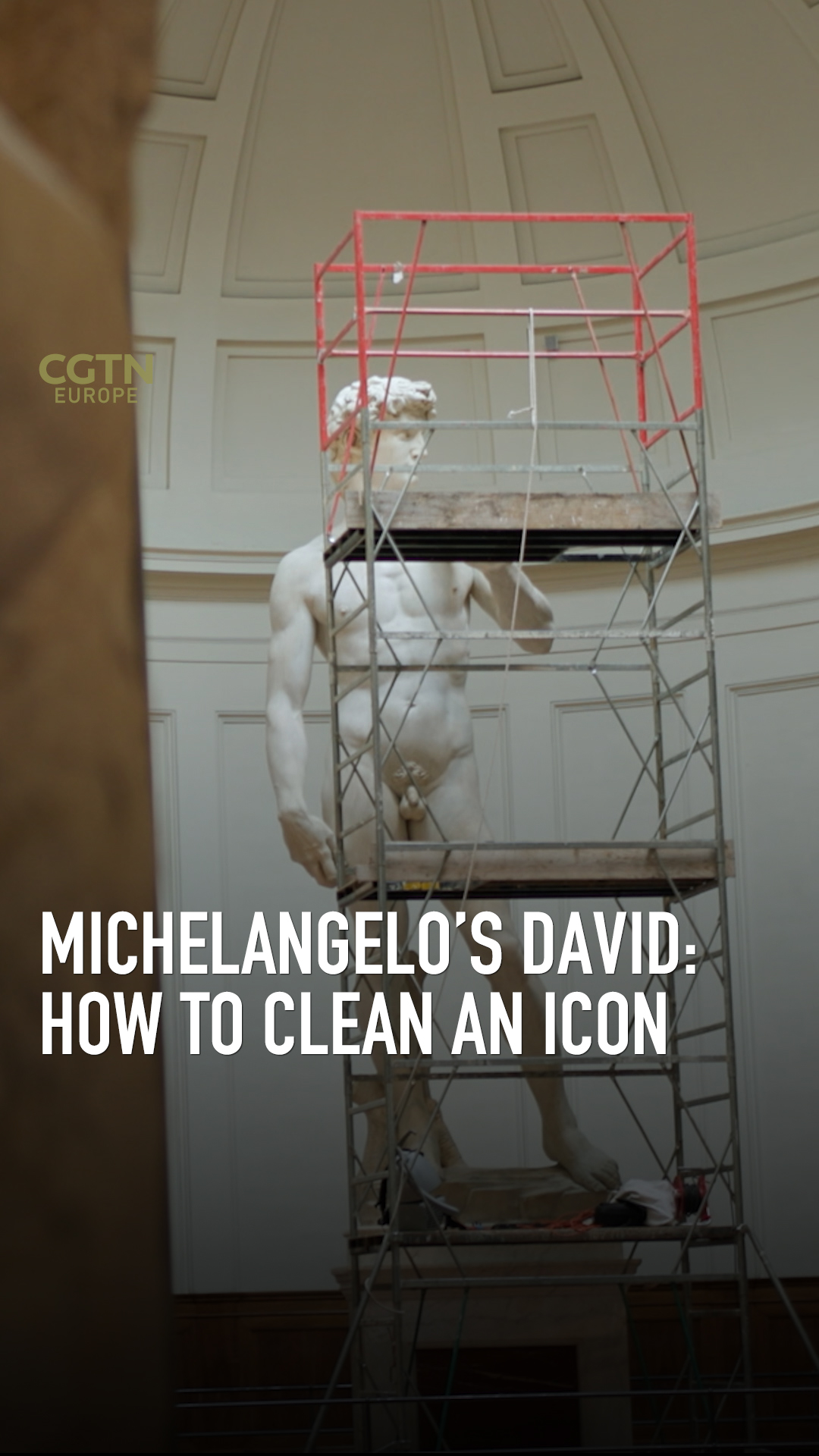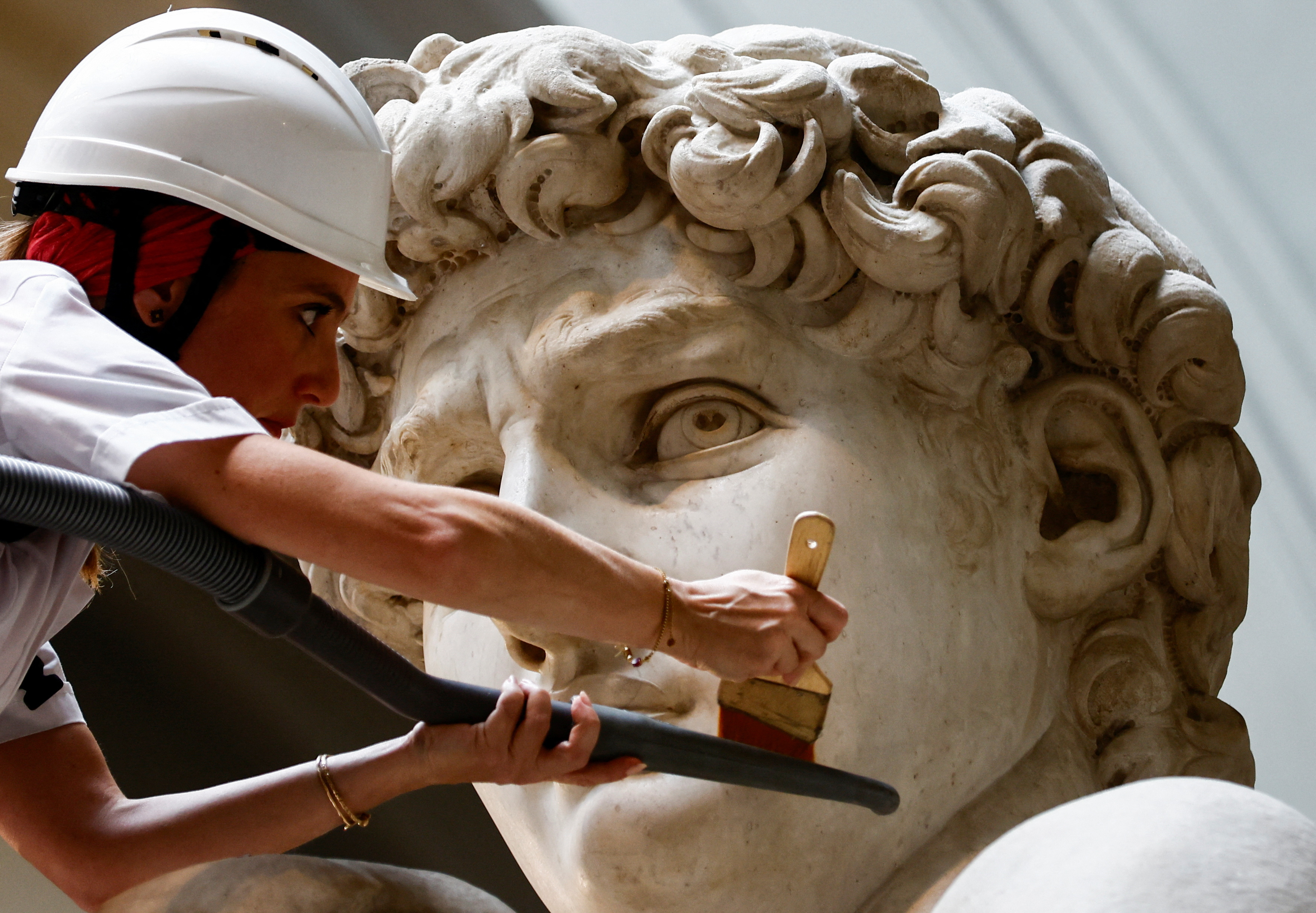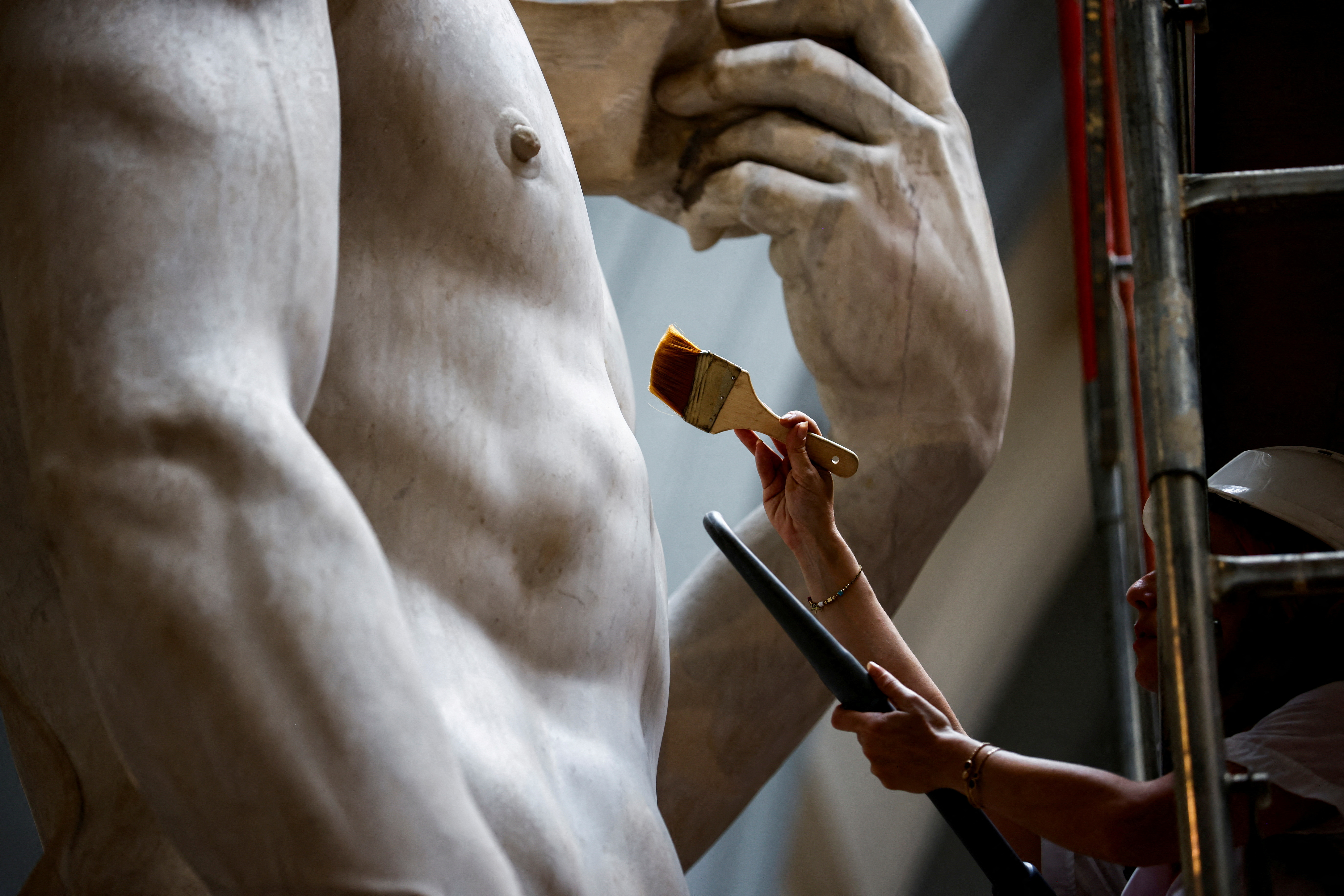03:01

Michelangelo's David is considered by many to be the most beautiful sculpture ever created – but in order to preserve the 519-year-old monument, it needs specialist cleaning every few months.
Inside the Accademia gallery in Florence, restoration expert Eleonora Pucci undertakes the detailed process of looking after the Italian symbol.
She uses a combination of fine brushes, a vacuum and delicate fabrics to remove dirt and dust to ensure the marble holds its bright shine and doesn't go grey.
She has to climb scaffolding to get to the top of the 5.17-meter statue to clean David's famous face. It's a high-pressure job – any slip and one of the world's great sculptures could be damaged forever.
READ MORE
Lufthansa 'need half Germany's energy' to go green
France and Germany propose multi-tier EU
Ten years of Belt and Road
00:58

"Whenever you are near a work of art, it's always extremely delicate because every operation you do, any instruments that you use, could be very useful but at the same time could do some damage," Pucci told CGTN.
Her work ensures that the statue doesn't need a potentially damaging full restoration. Michelangelo crafted David between 1501-1504, during Italy's renaissance period, from just a single block of marble.

Michelangelo's statue of David is now 519 years old and must undergo a delicate cleaning operation inside the Accademia gallery in Florence to protect and preserve its marble form. /Yara Nardi/Reuters
Michelangelo's statue of David is now 519 years old and must undergo a delicate cleaning operation inside the Accademia gallery in Florence to protect and preserve its marble form. /Yara Nardi/Reuters
The statue depicts the biblical character ready to take down the giant Goliath, with a rock in hand and a sling on his back. The statue stood in front of the Palazzo Vecchio in Florence's Piazza della Signoria until 1873.
During that period it sustained damage. Rioters broke off its arm during the 16th century and it lost a finger in 1813. In 1843 it was restored and cleaned with hydrochloric acid, a move that is now considered as being disastrous for its conservation.
"Now we know that acid is not good for marble. So now we are working with very, very sensitive brushes and with very delicate instruments and we are not touching the marble," said museum director Cecilie Hollberg.

Restoration expert Eleonora Pucci uses a range of delicate cleaning tools to clean David's delicate features, but she admits one false move could cause damage to the famous statue. /Yara Nardi/Reuters
Restoration expert Eleonora Pucci uses a range of delicate cleaning tools to clean David's delicate features, but she admits one false move could cause damage to the famous statue. /Yara Nardi/Reuters
This year the Accademia gallery celebrated the 150th anniversary since David was moved from outside the Palazzo Vecchio to aid its protection.
The museum has also been embroiled in a copyright battle over the image of the statue. It's been used to sell a range of products and has been Photoshopped on popular magazine covers.
The museum sued, calling the misappropriation of the image detrimental to cultural heritage. An Italian court found that the image of the sculpture is protected from commercial use by Italy's constitution.

In 1843 the statue was damaged when hydrochloric acid was used to restore the marble masterpiece. But now, sensitive brushes and other instruments are used that avoid touching the marble. /Yara Nardi/Reuters
In 1843 the statue was damaged when hydrochloric acid was used to restore the marble masterpiece. But now, sensitive brushes and other instruments are used that avoid touching the marble. /Yara Nardi/Reuters
"This is really a big victory and we are glad about this because that means that there is a chance to save the dignity of this masterpiece," Hollberg said.
The Accademia gallery, home of the statue and many of the sculptural jewels of the Italian renaissance, receives more than 1.5 million visitors per year.
The meticulous cleaning process ensures that its cultural treasures will be preserved for many years to come.
Subscribe to Storyboard: A weekly newsletter bringing you the best of CGTN every Friday